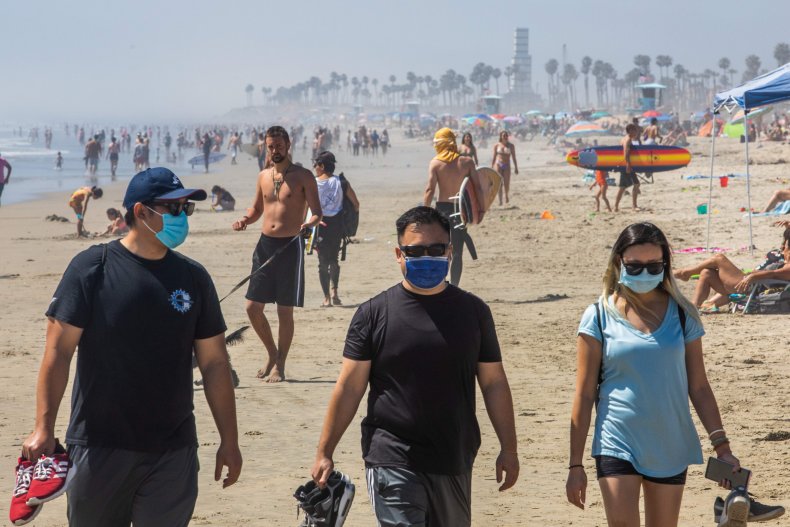California, With Strict Mandates, Has More COVID Cases Than Florida, Texas—Here's Why
Daily COVID cases in California appear to be higher than those in Texas or Florida, despite the Golden State having had a generally more strict approach to pandemic control.
According to the Centers for Disease Control and Prevention (CDC) as of November 9, California had a seven-day moving average of 6,297 COVID cases, compared to 3,102 in Texas and 1,470 in Florida.
California has had a proactive approach to the pandemic, having been the first state to announce plans for vaccine requirements for school students in October, after already having implemented masking and vaccine requirements for teachers.
Similar restrictions have proved controversial in Florida, where the school board has been punishing schools that have mask mandates, and Texas, where Governor Greg Abbott recently had a mask mandate ban overturned.
California also has a higher proportion of its population vaccinated (62 percent) compared to either Texas (54 percent) or Florida (60 percent), according to The New York Times.
If this seems hard to explain, it's because it is, according to Jennifer Dowd, associate professor of demography and population health at the University of Oxford Department of Sociology.
"We have to remain humble and admit we can't explain or predict everything about this pandemic," she told Newsweek. "Regionally, entire swaths of the U.S. that were on fire this summer with Delta are in decline while areas that had a reprieve then are now on the rise. This regional pattern of flare ups has happened time and time again and neither seasonality or other measurable factors does a good job explaining it.
"Comparing snapshots in time across different places and trying to correlate with specific measures like vaccination rates or mask use is fruitless. People on both sides of the COVID aisle seem to love these 'gotcha' moments comparing current cases in different locations, but it's usually misleading or just wrong."
There are so many factors at play, including a decline in vaccine protection over time. If many people were vaccinated early on in California compared to others, this might mean greater declines in immunity.
Age distribution and the way that cases are reported also play a part, meaning it's very hard to pit states against each other, said Rowland Kao, chair of veterinary epidemiology and data science at the University of Edinburgh.
But while it may not be possible to explain the current figures for sure, one potential possibility is that Florida and Texas both have had large outbreaks in recent months.
"For Florida, a very rough calculation implies that well over 10 percent of the population was infected in the last few months alone," said Nicholas Reich, professor of biostatistics at the University of Massachusetts, Amherst Department of Biostatistics and Epidemiology. "California, on the other hand, hasn't had over 200 infections per 100K since early February 2021.
"So there is a lot more recently-acquired immunity associated with infections in the populations in Florida and Texas than in California. That could be providing at least a temporary buffer against a late fall wave in those locations."
Srini Venkatramanan, research assistant professor at the University of Virginia Biocomplexity Institute & Initiative, agreed. He said the cases need to be interpreted in the context of the Delta wave that hit the U.S. over the summer which affected some states more than others.
"While Florida, and Texas to a lesser extent, experienced high case rates during the Delta wave, in California it has been flatter," he said. "So, although current rates in Florida and Texas are marginally lower than California, they are coming down from much higher levels."
Indeed, natural immunity is something put forward by Kao. He pointed out that Florida, with its total of around 3.6 million COVID cases and a population of 21 million, has a higher amount of cases per population than California, with 5 million total cases amongst a population of 40 million.
"And again, it also depends on when people got infected. Florida [has] many more cases relatively speaking recently, so therefore more protective immunity."
But as Dowd pointed out, comparing cases is a difficult way of assessing the pandemic and should be taken with a grain of salt.
COVID vaccines have been shown to reduce infection and serious health outcomes that the virus can cause, including hospitalization and death.
A recent study has suggested that unvaccinated people in Texas have been significantly more likely to die with COVID than vaccinated people.


